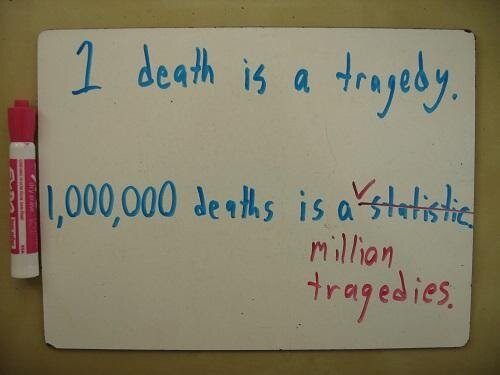How to Become a Math Cartoonist, in Four Easy Steps
By Ben Orlin
Hello, mathematical friends! It is I, Ben Orlin, author of the blog Math with Bad Drawings and of books that have inspired readers everywhere to say “Hooray triangles!” and “Yay constants of integration!” and “This poor man truly cannot draw!”
I bring happy news: you can join me. Not as a professional bad cartoonist—I’m surprised the labor market can support one of me, never mind another—but as someone who deploys mathy memes and cartoons to share ideas and spark conversations.
How? Here, I’ll show you.
Have something to say about math.
Good news: you already do. For example, aren’t there mathematical delights you treasure, strange truths you’ve come across and wish to propagate more widely?
And don’t you have gripes and grievances, too? Things that enrage you, perhaps even outrage you? Abuses of notation? Notations of abuse? People mangling math in the most horrific and unapologetic fashion?
Or, if nothing delights you, and nothing angers you, then I’m sure that, at the very least, you have a few awful puns you wish to inflict on the world.
Looking back at my early cartoons and blog posts, I gave a lot of criticisms. I dunked on two-column proofs. I dunked on headline writers. I dunked on all mathematical professionals everywhere. I dunked like the Boston-bred Dunkin’ Donuts-eater that I am.
Obviously, tearing things down doesn’t nourish the soul the way building things up does. But criticism has its place—as long as it lives in balance with construction.
2. Get something to write with.
In my early days, I drew on whiteboards, then photographed the whiteboards. This was a sloppy, low-tech, raggedy-looking approach. But it worked.
Later, I switched to drawing on paper… and then photographing the paper. This was 2014; somehow I was not yet familiar with the idea of “scanners.”
These days, I assemble cartoons in Paint (when I’m feeling lazy) or using Adobe InDesign (for paid gigs like my books and freelance work).
All that said: you can also create memes online. They’re faster to make, and often more popular among the youthful denizens of social media anyway!
3. Make the thing.
The hardest part of any creative process. I won’t slow you down with my blathering. You’ve already got the idea, now go make it!
4. Share it.
Do you have Facebook, Twitter, or Instagram? Each is home to an oddball community of mathematical meme enthusiasts. This cartoon, made in collaboration with Howie Hua, picked up almost 20,000 likes on Facebook.
But don’t let social media metrics dominate your sense of self-worth. (Leave that to vapid professionals like me.) What matters isn’t the quantity of engagement, but the quality.
Put your cartoons on your syllabus.
Put them on your office door.
Put them on your blog or personal site.
Put them wherever they’ll allow you to start conversations.
Every cartoon, however silly or frivolous, expresses a thought. And the highest purpose of thoughts is to inspire more thoughts. It’s the exchange of ideas, the way that each thought blossoms from the last, that makes mathematics worth doing—and worth cartooning about.








